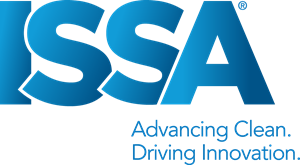In the past 10 years, a revolution in the thought and technology behind the methods of cleaning of livestock housing, prior to disinfection, has occurred.
The use of high-pressure water to remove organic soiling, particularly in the case of poultry production, which was once the norm, is now seen as primitive due to it being ineffective and a high-risk procedure. With the presence of highly pathogenic microorganisms and viruses reducing the efficiency of poultry breeding and farming, infections such as Avian Influenza (AIV) and mortality rates of >5%, due to contamination between flocks, cannot be tolerated. Protection through effective cleaning and disinfection programme is therefore the key objective of modern poultry producers.
During the UK foot and mouth outbreak in 2004, Defra recorded that the virus transmitted over long distances through the air via water droplets. It was discovered that this carrier mechanism was due to the use of high-pressure washers by contractors decontaminating infected farms. This meant the virus became airborne in an infectious aerosol caused by water pressure, resulting in contaminated droplets being carried a long way from an infected farm.
Evans carried out tests which indicated microorganisms from poultry housing could be cultured from air samples taken up to one kilometre downwind from buildings which were in the process of being cleaned.
This transmission route obstructed efforts to eradicate the outbreak of AIV from infected farms in Asia - the virus simply moved from one house to another in the overspray, and then back again as adjacent houses were cleaned down. It is now acknowledged that this contamination vector allows transmission of the most dangerous viruses and so, to assist the industry, a new approach to cleaning was necessary, to strengthen this major critical control point in farm biosecurity.
Simply by replacing high-pressure washing with low-pressure detergent systems, such as foam cleaning, aerosol transmission of pathogens from high-pressure water is prevented, as contaminated droplets are not created. Cleaning poultry houses with a foaming detergent is now a well-established and safe method, used successfully by many cleaning contractors.
The objective is to apply the foaming detergent to all surfaces of the housing and equipment to soften organic soiling and trap dust. The detergent creates a high-density foam through a foaming lance which prevents overspray. This method is 3 times faster than high-pressure water application and, consequently, provides a reduction in water consumption and time. Pre-rinsing also becomes unnecessary as the foam wets-out dust and softens built-up feed deposits, so removal is easier. After 20 minutes contact time, the foam will collapse onto the building surface; this allows the dust and organic material to be easily dislodged using a low-pressure rinse.
Once the housing has been allowed to air dry, it can be disinfected using an authorised full spectrum biocide at the dilution which has passed the appropriate UK/EN Biocide Regulation tests and has been proven to be effective. The use of Defra approved disinfectant dilutions only applies in the event of a notifiable disease outbreak, not for general everyday use.
New Advances
The latest advance involves using gel detergent technology, whereby a specialised formulation creates a shear thickening solution. A “sticky” foam, which improves adherence to surfaces, increases contact between the detergent and the substrate. These formulations are superior to conventional foams. Gel cleaning in livestock housing is also the best way to deal with heavier soiling, particularly in layer farms, where fat and protein deposits respond better to gel products.
The application of a detergent gel cleaning formulation, prior to the disinfection phase, is therefore more efficient and effective in terms of removal of heavy organic material, with all the speed and efficiency benefits of standard foaming systems. This leads to a subsequent improvement in disinfection standards, as soiling is completely removed from treated surfaces. Many livestock cleaning contractors are now using this type of product, but it should be recognised that training in the use of the system is required for it to be fully effective.
Without adequate cleaning, the ineffective disinfection of poorly cleaned buildings is a recipe for disaster and offers no protection in the event of a pathogen entering the house. Contamination from one crop to the next becomes inevitable. Gel cleaning using a properly formulated, tested and proven detergent is therefore the most effective way for producers to evade a major source of livestock infection and improve farm turnaround efficiency.
Evans would recommend the use of Target Powergel and Shift for cleaning livestock housing using this method. You can find out more on the corresponding product pages.
Target Powergel
Shift
The use of high-pressure water to remove organic soiling, particularly in the case of poultry production, which was once the norm, is now seen as primitive due to it being ineffective and a high-risk procedure. With the presence of highly pathogenic microorganisms and viruses reducing the efficiency of poultry breeding and farming, infections such as Avian Influenza (AIV) and mortality rates of >5%, due to contamination between flocks, cannot be tolerated. Protection through effective cleaning and disinfection programme is therefore the key objective of modern poultry producers.
During the UK foot and mouth outbreak in 2004, Defra recorded that the virus transmitted over long distances through the air via water droplets. It was discovered that this carrier mechanism was due to the use of high-pressure washers by contractors decontaminating infected farms. This meant the virus became airborne in an infectious aerosol caused by water pressure, resulting in contaminated droplets being carried a long way from an infected farm.
Evans carried out tests which indicated microorganisms from poultry housing could be cultured from air samples taken up to one kilometre downwind from buildings which were in the process of being cleaned.
This transmission route obstructed efforts to eradicate the outbreak of AIV from infected farms in Asia - the virus simply moved from one house to another in the overspray, and then back again as adjacent houses were cleaned down. It is now acknowledged that this contamination vector allows transmission of the most dangerous viruses and so, to assist the industry, a new approach to cleaning was necessary, to strengthen this major critical control point in farm biosecurity.
Simply by replacing high-pressure washing with low-pressure detergent systems, such as foam cleaning, aerosol transmission of pathogens from high-pressure water is prevented, as contaminated droplets are not created. Cleaning poultry houses with a foaming detergent is now a well-established and safe method, used successfully by many cleaning contractors.
The objective is to apply the foaming detergent to all surfaces of the housing and equipment to soften organic soiling and trap dust. The detergent creates a high-density foam through a foaming lance which prevents overspray. This method is 3 times faster than high-pressure water application and, consequently, provides a reduction in water consumption and time. Pre-rinsing also becomes unnecessary as the foam wets-out dust and softens built-up feed deposits, so removal is easier. After 20 minutes contact time, the foam will collapse onto the building surface; this allows the dust and organic material to be easily dislodged using a low-pressure rinse.
Once the housing has been allowed to air dry, it can be disinfected using an authorised full spectrum biocide at the dilution which has passed the appropriate UK/EN Biocide Regulation tests and has been proven to be effective. The use of Defra approved disinfectant dilutions only applies in the event of a notifiable disease outbreak, not for general everyday use.
New Advances
The latest advance involves using gel detergent technology, whereby a specialised formulation creates a shear thickening solution. A “sticky” foam, which improves adherence to surfaces, increases contact between the detergent and the substrate. These formulations are superior to conventional foams. Gel cleaning in livestock housing is also the best way to deal with heavier soiling, particularly in layer farms, where fat and protein deposits respond better to gel products.
The application of a detergent gel cleaning formulation, prior to the disinfection phase, is therefore more efficient and effective in terms of removal of heavy organic material, with all the speed and efficiency benefits of standard foaming systems. This leads to a subsequent improvement in disinfection standards, as soiling is completely removed from treated surfaces. Many livestock cleaning contractors are now using this type of product, but it should be recognised that training in the use of the system is required for it to be fully effective.
Without adequate cleaning, the ineffective disinfection of poorly cleaned buildings is a recipe for disaster and offers no protection in the event of a pathogen entering the house. Contamination from one crop to the next becomes inevitable. Gel cleaning using a properly formulated, tested and proven detergent is therefore the most effective way for producers to evade a major source of livestock infection and improve farm turnaround efficiency.
Evans would recommend the use of Target Powergel and Shift for cleaning livestock housing using this method. You can find out more on the corresponding product pages.
Target Powergel
Shift














